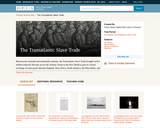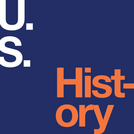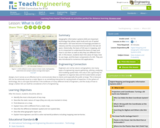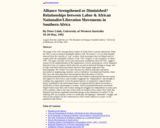
A photographer trails elephants in Kenya in this video segment from Africa. [7:52]
- Subject:
- Mathematics
- Science
- Material Type:
- Audio/Video
- Lesson
- Provider:
- PBS LearningMedia
- Date Added:
- 12/01/2022

A photographer trails elephants in Kenya in this video segment from Africa. [7:52]

A photographer trails elephants in Kenya in this video segment from Africa.

This collection uses primary sources to explore the Transatlantic Slave Trade. Digital Public Library of America Primary Source Sets are designed to help students develop their critical thinking skills and draw diverse material from libraries, archives, and museums across the United States. Each set includes an overview, ten to fifteen primary sources, links to related resources, and a teaching guide. These sets were created and reviewed by the teachers on the DPLA's Education Advisory Committee.

U.S. History is designed to meet the scope and sequence requirements of most introductory courses. The text provides a balanced approach to U.S. history, considering the people, events, and ideas that have shaped the United States from both the top down (politics, economics, diplomacy) and bottom up (eyewitness accounts, lived experience). U.S. History covers key forces that form the American experience, with particular attention to issues of race, class, and gender.Senior Contributing AuthorsP. Scott Corbett, Ventura CollegeVolker Janssen, California State University, FullertonJohn M. Lund, Keene State CollegeTodd Pfannestiel, Clarion UniversityPaul Vickery, Oral Roberts UniversitySylvie Waskiewicz


U.S. History is designed for a two-semester American history sequence. It is traditional in coverage, following a roughly chronological outline, and using a balanced approach that includes political, economic, social, and cultural developments. At the same time, the book includes a number of innovative and interactive features designed to enhance student learning. Instructors can also customize the book, adapting it to the approach that works best in their classroom.

How would an ethogram for your pet compare to an ethogram of a wild animal? This activity is designed to start your students in recognizing themselves as scientists and thinking critically about problem-solving. The goal is to teach concepts through discovery and to encourage using scientific thought processes. As with all lessons provided, please feel free to adapt them according to your students’ abilities. You may find it more successful to lead activities and discussions as a whole group as opposed to having your students’ work in small groups. Certain scientific vocabulary may or may not be appropriate for your students’ level of understanding. Take these ideas, make them your own and your students will have a greater chance at success.

The history of West Africa provides a context for learning about the transatlantic slave trade. Discover the rich cultural traditions and economic networks that existed in the West African empires such as Ghana, Mali, and Songhay long before European slave traders arrived.

Links to UN programs and organizations involved in economic development, by region.

Geographic information systems (GIS) are important technology that allows rapid study and use of spatial information. GIS have become increasingly prevalent in industry and the consumer/internet world in the last 20 years. Historically, the basis of GIS was in mapping, and so it is important to understand the basis of maps and how to use them as well as why they are different from GIS. In this lesson, students learn the value of maps, how to use maps, and the basic components of a GIS. They are also introduced to numerous GIS applications.

A site from PBS allows the student to discover Africa through pictures and stories. Explore Black Kingdoms of the Nile, The Swahili Coast, The Slave Kingdoms, The Holy Land, The Road to Timbuktu, Lost Cities of the South. The site also offers classroom activities and lesson plans.

This is a site that describes African women moving away form the traditional roles in society and shaping the political and social culture in all areas of Africa.

An article on the relationship between labor and nationalist/liberation movements.